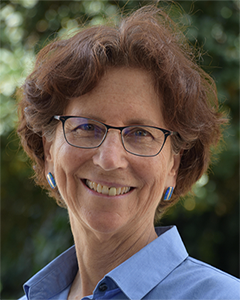On June 14, 2022, the Natural Carbon Sequestration and Resilience Act (AB 2649, C. Garcia) passed out of the California Senate Natural Resources and Water Committee with bipartisan support. AB 2649 will make California the first state in the nation to set statutory goals for naturally removing past climate pollution from the atmosphere, while also making the state more resilient to heat extremes, drought, wildfires, and other climate impacts. You can also read more about the bill and find other relevant documents here.
The following is a transcript of testimony given to the Committee by The Climate Center’s Ellie Cohen and the Carbon Cycle Institute’s Dr. Jeff Creque.
Testimony from Ellie Cohen, CEO, The Climate Center:
Good morning Chair Stern and committee members. I’m Ellie Cohen, CEO of The Climate Center. I am honored to testify in support of AB 2649, to set urgently needed state goals for naturally removing carbon from the atmosphere. Many thanks to the author for her championing this bill.
Recent UN climate science reports are clear, The window of opportunity to secure a livable future is quickly closing. No temperature rise is safe.
Unless we act boldly now, extreme heat and drought will continue to threaten California’s water supply, our forests and fisheries, the health of our communities, and our agricultural economy. Many of the crops we grow today may not be viable as early as 2027.
Per the UN, we must cut fossil fuel use in half by 2030 and remove carbon we’ve already put in our atmosphere to have a shot at securing a stable climate.
To remove that legacy climate pollution, increase drought resilience, and help replenish groundwater, the state must rapidly scale up proven, cost-effective practices for natural carbon sequestration — such as restoring riparian habitat and coastal wetlands, managing for mature forest structure, applying compost and planting cover crops on agricultural soils, and greening our cities.
We cannot rely on technological direct air capture (DAC), which is in its infancy, very expensive, and not yet scalable.
Only natural carbon accrual can cost-effectively draw down past carbon emissions at scale this decade while increasing resilience to growing extremes, with multiple co-benefits for our health, environment, and economy.
Supported by 80 organizations, we urge your “aye” vote on the Natural Carbon Sequestration and Resilience Act essential for securing a healthy, climate-safe future for all.
Testimony from Jeff Creque, PhD, Director of Rangeland and Agroecosystem Management, Carbon Cycle Institute:
I’m Jeff Creque with The Carbon Cycle Institute. I farmed on the Marin County Coast for 25 years before co-founding the Marin Carbon Project in 2006 and joining CCI as a founding Director in 2013.
I stand in support of AB 2649.
As much as one-third of the excess carbon dioxide in the atmosphere is the direct result of historic mismanagement of the world’s natural and working Lands. We must urgently set — and meet — ambitious goals for the transformation of that excess carbon dioxide back into the carbon-rich terrestrial and aquatic ecosystems that blessed the California landscape before it was California. That abundance of ecosystemically sequestered carbon in all its natural forms — a process aided by thousands of years of intimate indigenous relationship with place — enabled the building of the infrastructure of our state. From the lumber of her virgin redwood forests and Valley Oak woodlands to the waters of her rivers, lakes, and streams to her carbon-rich Central Valley marshland soils.
If we are to protect and restore California’s biodiversity, our surface and groundwaters, our salmon runs, our forests, our rangeland watersheds, our agricultural soils, our natural resource-based economic activity, or the health of our communities, we must engage our natural and working lands to recapture as much of that lost carbon dioxide from the atmosphere as possible, as quickly as possible.
We rose to the challenge of the Dust Bowl of the 1930s by creating the Soil Conservation Service, the Civilian Conservation Corps, and the County Conservation Districts. That infrastructure still exists and — with adequate state support, including a greatly expanded and well-trained workforce — will rise to meet this new, much greater challenge.
The Natural Carbon Sequestration and Resilience Act sets an ambitious yet essential and realizable target for terrestrial carbon sequestration in California.
We urge your “aye” vote. Thank you.


